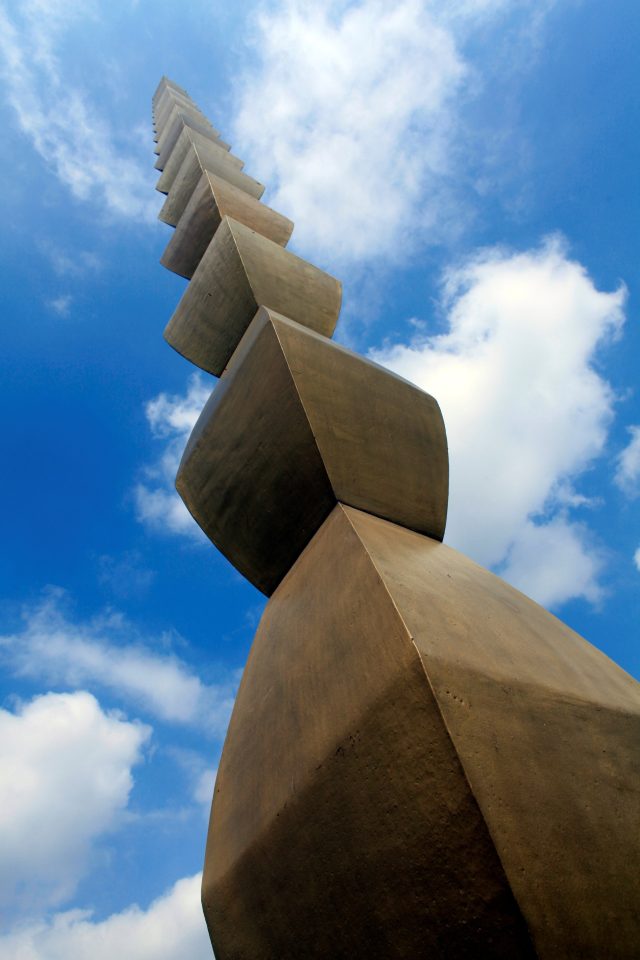Jordan’s Umm al-Jimal village has been added to UNESCO’s World Heritage List.
The village is near the Jordanian-Syrian border, 86 kilometers (53 miles) north of the capital, Amman, and is known as “the black oasis” due to the prevalence of black volcanic rock in the area.
Jordanian Tourism and Antiquities Minister Makram al-Qaisi said in a news conference Sunday that including Umm al-Jimal on the World Heritage List is a “great achievement we should be proud of.”
He said the ministry hoped to invite local and international investors to the site and “present Umm al-Jimal as an attractive tourist destination.”
The name Umm al-Jimal comes from using camels as part of trade caravans in the village.
The village was first settled by the Nabataean peoples in the A.D. first century and later occupied by the Romans, becoming an important agricultural and commercial village.
Umm al-Jimal is the seventh historical site in Jordan to be added to UNESCO’s World Heritage List, along with Petra, Quseir Amra, Umm al-Rasas, Wadi Rum, Mughatas and Salt.
Tourism contributes between 12% and 14% of the gross domestic product (GDP) in the kingdom, whose 10 million inhabitants rely heavily on the sector.
Qaisi said that Jordan welcomed more than 6 million tourists in 2023, bringing in $7 billion.
But tourism has started to feel the effects of the war raging in nearby Gaza. Qaisi said the kingdom saw a 4.9% drop in tourism revenue so far in 2024 and a 7.9% drop in visitors.
Most tourists come from Europe, the United States and Canada, followed by Asian Pacific countries.
Brancusi’s Romanian outdoor sculptures
UNESCO added a series of outdoor sculptures by Romanian modernist master Constantin Brancusi to its world heritage list, celebrating their place as one of the most notable examples of 20th-century public art.
Brancusi created the open-air collection that includes the “Endless Column” and the “Gate of the Kiss” in the small south-western Romanian town of Targu Jiu in 1937-1938 as a tribute to fallen World War I soldiers.
The five sculptural installations aligned on a 1.5-kilometer (nearly 1-mile) axis along Targu Jiu’s central Avenue of Heroes are one of the few Brancusi works located in Romania.
“The granted recognition forces us to protect the monumental ensemble, to keep it intact for future generations and for humanity’s cultural memory,” Romanian Culture Minister Raluca Turcan said.
Brancusi was born in the small village of Hobita near the Carpathian Mountains but lived in Paris for most of his life.
He arrived in Paris in 1904 after an 18-month walk and eventually worked under Auguste Rodin. He left Rodin’s studio in 1907, saying, “Nothing grows under big trees,” and became one of the most influential artists of the 20th century.
He bequeathed his studio and some of his art to the French state after he died in 1957. He had wanted to leave his art to Romania, but the then-communist government declined the offer.
In 2023, the western Romanian city of Timisoara staged the first retrospective exhibit of Brancusi’s works to be held in his home country in more than 50 years. A separate comprehensive Brancusi exhibit ended this month at the Centre Pompidou in Paris.





